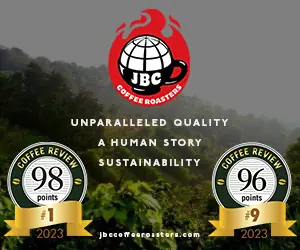Courtesy of Kenneth Davids, 21st Century Coffee: A Guide
Java has a long and storied history as coffee origin. Coffee was first planted by the colonial Dutch in 1696, and for several decades during the 18th century Java was one of only two sources of coffee for the entire world. The other was Yemen, where coffee was first established as beverage and commercial crop. This history accounts for the use of the word “Java” as a synonym for coffee itself. Until the 1920s or so, Java coffee had such prestige as coffee origin that it commanded significant price premiums almost entirely on the basis of its name, much as Kona and Jamaica Blue Mountain coffees do today.
However, at present Java is a relatively small player both in the world of commodity and specialty coffee, having been replaced by Sumatra as the leading Indonesian coffee island. Nevertheless, it continues to turn up regularly on specialty coffee menus and websites.
Government Estate Java — The Traditional Java
As happened elsewhere in Indonesia, leaf rust wiped out virtually all coffee production in Java in the late 19th century. The colonial Dutch replaced the original Arabica plantings with naturally rust-resistant Robusta at lower elevations, and moved Arabica cultivation to higher elevations, particularly to large plantations at the east end of the island in the mountainous Ijen-Raung highlands. After independence these Dutch-operated plantations or estates were taken over by the Indonesian government or private Indonesian companies.
The four largest continue to be operated by the government and produce an Arabica coffee type generally called government estate Java. This is the standard-issue Java coffee that shows up in both premium commodity and specialty markets. The four government estates are Kayumas, Pancoer (Pancur), Djampit (Jampit) and Blawan (Blauan). The two largest, Djampit and Blawan, produce the largest quantities of coffee and are the most likely sources of standard-issue specialty Java coffees.
The Government Estate Cup.
It is important to note that Java coffees from the government estates are entirely different in cup profile from most Sumatra coffees because they are traditionally wet processed rather than wet hulled. This difference in processing method is crucial. The best government estate Javas lack the earth and fruit-toned idiosyncrasies of the Sumatra and Sulawesi wet-hulled types, and generally resemble many of the world’s other moderately high-grown wet-processed coffees produced from rust-resistant hybrid tree varieties. Because of subtle differences in the nuances of processing and drying or in microclimate or growing elevation, specific lots of government estate Java may differ, with some more interesting or distinctive than others.
The Newer Small-Holder Javas
Java has begun a new chapter as specialty coffee origin, however. The opportunities provided by the new global specialty coffee network, with its interest in uncovering unusual and distinctive coffee origins and in supporting small-holding farmers, has encouraged the development of new coffee types and regions. Like Sumatra coffees, many of these new Javas tend to be wet-hulled coffees, with similarly idiosyncratic cup profiles. Some are conventionally washed process, however, and experiment with other processing methods, including natural and honey, is intensifying.
The Traditional Java Cup
Government Estate Conventionally Wet-Processed Javas.
Moderately bright, lightly syrupy in mouthfeel, straightforward in aroma and flavor (roasted nut, baking chocolate, aromatic wood, some citrus or citrus zest, occasional hints of sweet flowers). Sometimes marred by a woody flatness or complicated by interesting herby or tobacco-like notes.
The Newer Wet-Hulled Small-Holder Coffees From East, Central and West Java.
Usually a somewhat cleaner, sweeter version of the wet-hulled profile typical of Sulawesis or standard-issue Sumatras. Molasses sweetness, pungent grapefruit or tamarind, aromatic wood (cedar, pine), moist tobacco, musky flowers.
Caveat.
The small-holding producers of East and West Java are beginning to produce a wide range of coffees produced through alternative processing methods that range from natural to honey to anaerobic slow dry. At this writing cup profiles for these new coffee types are difficult to generalize.
Java Growing Regions
Java coffee production is usually divided between the Ijen-Raung highlands of East Java, a mountainous region where the large traditional estates are located, and the highlands of East, Central and West Java, where production is virtually entirely in the hands of small holders. See the Java map for detail and growing region names.
Java Coffee Ratings and Reviews
Click here to view ratings and reviews of coffees from Java.










